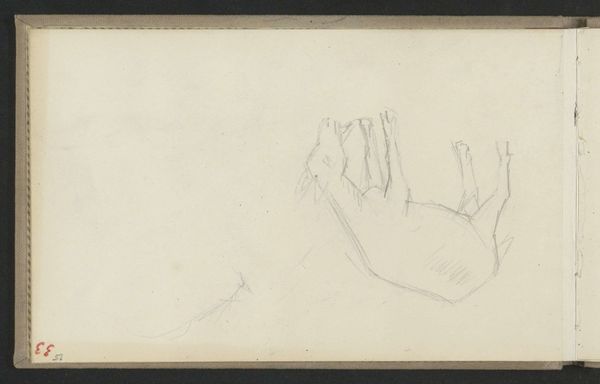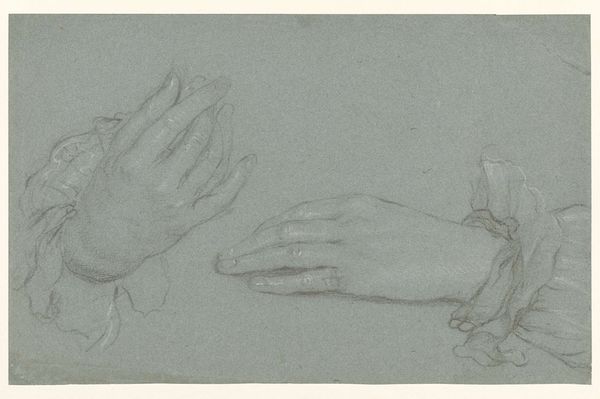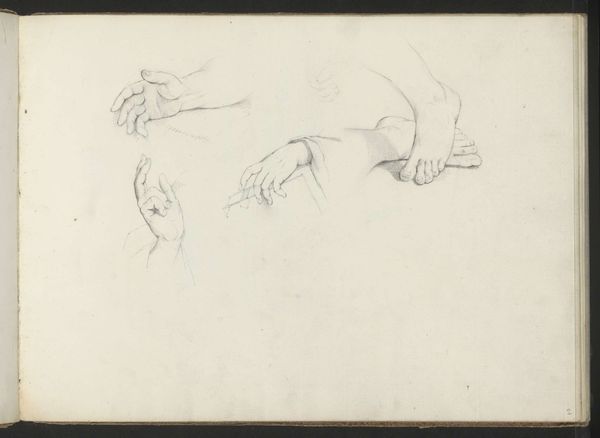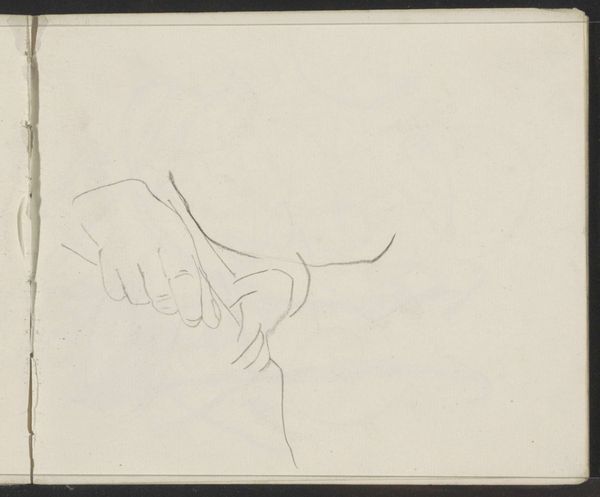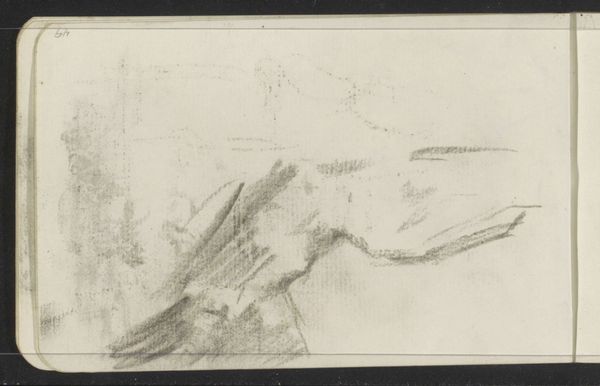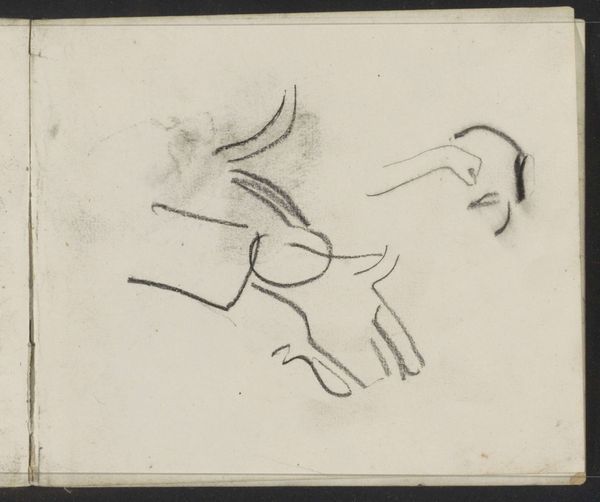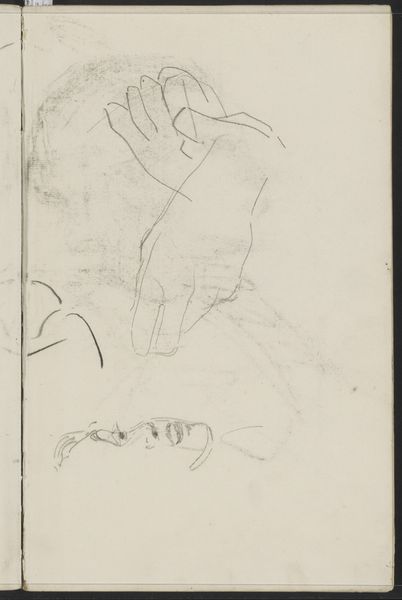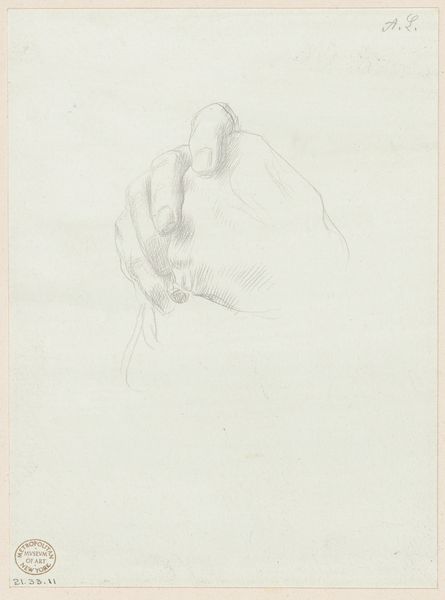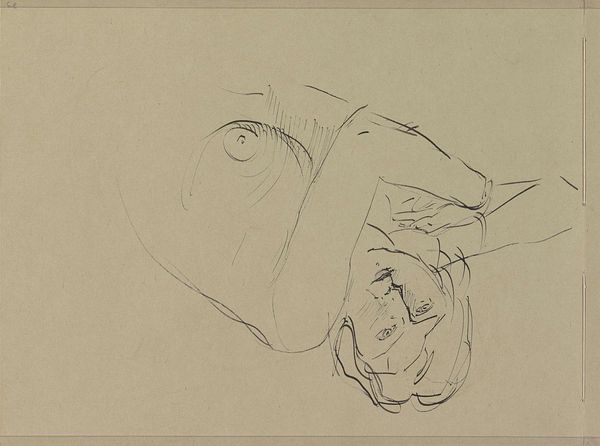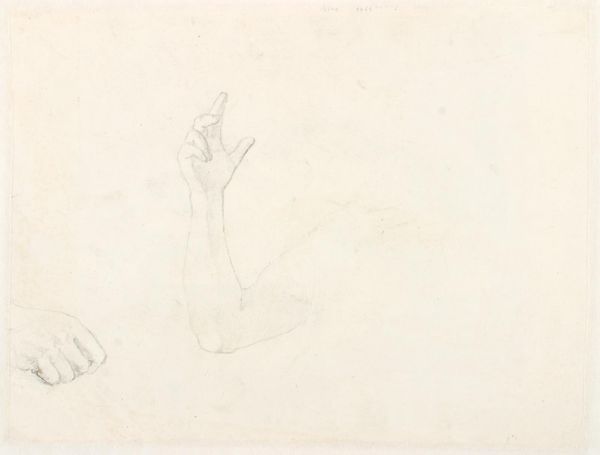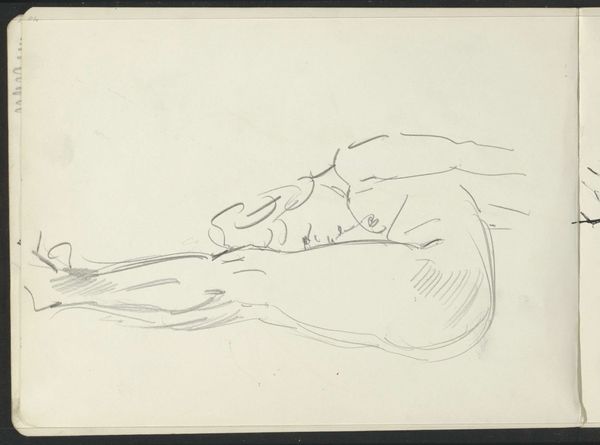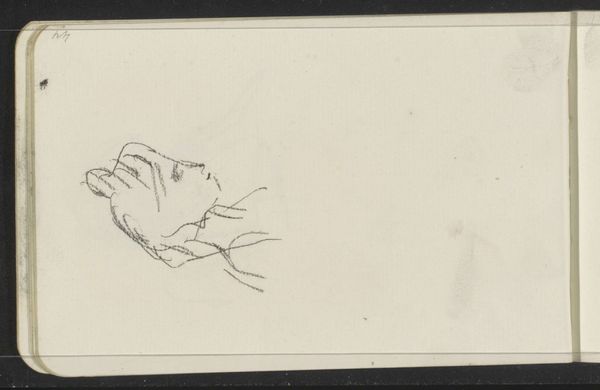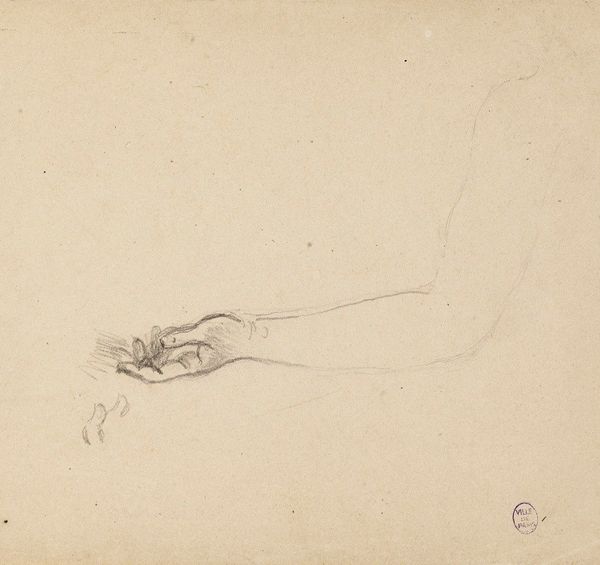
drawing, pencil
#
portrait
#
drawing
#
form
#
pencil drawing
#
pencil
#
line
#
academic-art
#
realism
Dimensions: height 273 mm, width 246 mm
Copyright: Rijks Museum: Open Domain
Curator: Charles Howard Hodges created this pencil drawing titled "Handen- en draperiestudie," sometime between 1774 and 1837. It’s currently held in the Rijksmuseum. Editor: There's something intensely personal and revealing about these studies of hands. The realism and simplicity almost evoke vulnerability, wouldn't you say? It really focuses my attention on the artistic process and material itself, those delicate pencil lines. Curator: Indeed. These hand studies are deeply rooted in academic art traditions, a crucial exercise for aspiring artists. It reflects the emphasis placed on mastering anatomy and form within art academies of the period, revealing institutional values and pedagogies. Editor: Absolutely. You see the precision required. I am fascinated by the way the artist uses line and shading to create the illusion of three-dimensionality. You can almost feel the texture of skin and the drape of the fabric. It emphasizes the artist's skilled labor to produce accurate representations, considering art’s role in craftsmanship. Curator: These weren't merely technical exercises; they also reflected broader societal values. The focus on hands suggests an appreciation for labor and skill, ideals important in the rising mercantile society. Hodges, by perfecting their depiction, sought recognition and advancement in a hierarchical artistic field, subject to patronage and academy approval. Editor: And the material conditions, you see that laid paper reacting to the graphite, create an ethereal feel... almost dreamlike. Pencil drawings allowed wider engagement because this allowed a relatively accessible medium. So, was Hodges engaging a wider demographic in their era through it? Curator: Possibly. Hodges worked as a portraitist and indeed sought commercial success. The production and reproduction of portraits depended heavily on the distribution and acceptance networks within various social classes. By mastering his skills, Hodges hoped to broaden his clientele. Editor: I find myself thinking of the countless hours the artist dedicated to studying such fleeting gestures, like capturing ephemeral moments using tangible materials like graphite on laid paper. These aren’t just studies; they’re meditations on the relationship between hand and the creative act. Curator: A relationship, it's also fair to add, mediated by institutions and socio-economic structures influencing not only *how* artists worked, but *why*. Editor: That said, it's rewarding to think about what the artist would think now knowing it's on display still today.
Comments
No comments
Be the first to comment and join the conversation on the ultimate creative platform.
